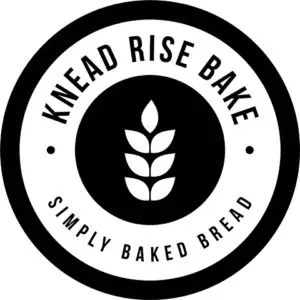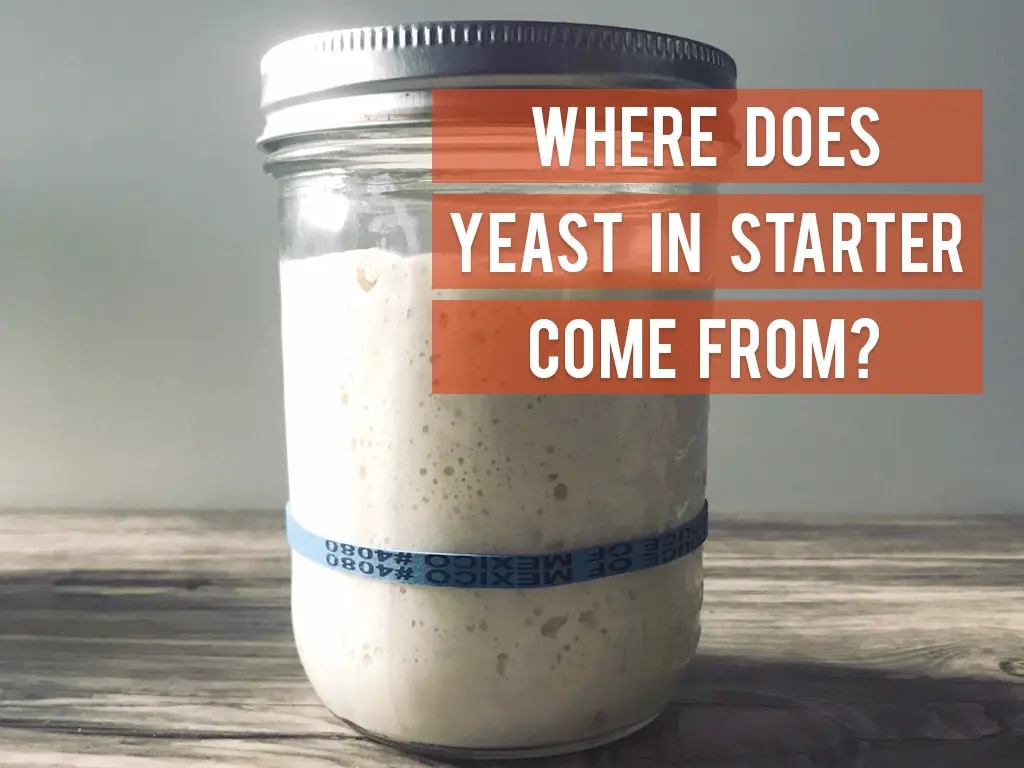The theories are far and wide when it comes to where yeast in sourdough actually comes from. We’ve seen so many debates in comment sections around the web and wanted to get down to the bottom of things. So we’ve spent a great deal of time and research over the years to take this one on.
But it is important to know that sourdough baking is in a new revival just barely peaking today, and much of the knowledge and practices involved with it are currently being rediscovered. It’s an exciting time for us home bakers, but it can also be a bit frustrating when there is a lot of contradictory information floating around.
In short, a lot of very good professional bakers and amateur home bakers alike are kind of all learning as they/we go. So just know that some of this information can and will change over time. That being said we have a pretty good idea where it comes from…
Yeast found in a sourdough starter is thought to come from three primary places:
1. The flour used to feed a starter.
2. The environment a starter is maintained in.
3. The hands of the baker(s) maintaining a starter.
Let’s tackle these three in more detail. Number three is especially interesting as it has a wide range of implications for baking, especially for new bakers. But let’s start with number one because ordinal lists have been used by writers/teachers for centuries. I’m not here to change history.
1. Yeast is Found in Flour
First we’ll just say that yeast and other types of bacteria are as numerous as stars in the night sky. They are everywhere! Thus, they can be found on and in various parts of wheat.
Depending on the type of wheat, what part was included in the milling process, and where the wheat came from will determine what yeast/bacteria is present in the flour you have. So in other words, whole wheat flour from Germany most certainly will have different strains of bacteria than white flour from America.
However, you can bank on the flour in your pantry having yeast and bacteria present in it.
So, by feeding your starter flour on a regular basis you’ll be introducing yeast and bacteria into your sourdough. This is also true for new starters. If you’re starting out on day one, you can be fairly certain that yeast is already in there getting the process started off nicely.
If you’d like our guide on starting a sourdough starter in 7 days or less, it’s right here.
2. Yeast is Found in the Environment
Yeast is found on wheat because it is found on nearly everything from other plant matter to bowls, to counters, and even people. Because it is everywhere it is literally floating on dust particles in the air.
This means that by keeping a starter out on your counter, whenever the lid comes off, yeast and bacteria are certainly landing in it. Or, it’s simply finding its way into your starter via your spoon you use to mix with, or your hands, or anything else nearby really.
Leading research on sourdough starters actually suggests that sourdough cultures change depending on the environment they are kept in because of this fact (including the flour point from above). This means if you have a sourdough culture that you received from San Francisco or France, over time the environment of the dough will change to align with what is floating around your environment and the flour you are feeding it.
One recent study sent out the same ingredients to bakers from around the world and had them maintain a starter using only those ingredients. They then invited them to all bring their starters in to be tested. They found that all of the starters were drastically different suggesting that the environment is incredibly influential on the starter culture (source). Maybe just as important as the ingredients used?
3. The Hands of Bakers
This one is really interesting, as the same researchers from the study mentioned above took samples of the bacteria found on the hands of each of the bakers involved in the experiment. They found that about half of the bacteria found in each starter came from the hands of the bakers while the other half came from the flour used.
The bacteria on the hands of bakers would certainly consist largely of the environmental bacteria found all around them, but it would also include the bacteria that are unique to their bodies.
If you’re anything like us, once you get over your initial “ew” moment, you likely will geek out about all that this research suggests.
First, your homemade sourdough is quite literally the only one of it’s kind. And because it is one of a kind it will not respond exactly like another baker’s sourdough. Sure they will be very similar, but still different enough to possibly notice a variance in rise times and activity levels. Which should give you a resounding “aha” moment if you’ve ever wondered why your sourdough starter doesn’t quite look as “fill in the blank” as the starter from the baker or blogger you follow.
Additionally, the research also shows that bakers tend to have more bacteria living on their hands than non-bakers. Which means, some of the success that bakers have might actually come down to how often and how long they’ve been baking. Conversely, some of the lack of success new bakers have could come down to their own hands. I’ve been a firm believer that bakers hands are less sticky than non-bakers. This might actually explain some of that.
Basically, you need to bake enough for your hands to become dough-handling leavening ninjas. 🙂
This seems to align with our own progress in baking. Our starter and bakes have seemed to grow in activity and potency over the years. Additionally, we’ve found that many of our new starters that we create these days are active enough to bake by day four instead of around days ten to twelve (can’t remember exactly) on our very first attempt.
Could it be something else going on? Sure! Have we learned a lot, and built skill which is likely why we’ve seen better results? Absolutely! Is it possible that it has nothing to do with our hands at all? Absolutely! But it is very interesting to think that our own hands might be playing a major role in the successes (as seasoned bakers) or even failures we had (in the early days as new bakers).
How is it that bakers have more bacteria on their hands?
The evidence seems to suggest for bakers the cultures found in our sourdough find their way onto our hands making them home and vice-versa. They find a balance together in creating a healthy and thriving environment that both are a part of (the hands and the dough).
This all leaves me to wonder if a seasoned sourdough baker who makes massive amounts of dough on the daily could in theory mix some flour and water together and leaven bread with just his/her hands via kneading. Probably not, but I’m totally nerding out over that thought.
Putting it all Together
Given the wide range of possible environmental factors combined with the wide range of possible wheat varieties and milling practices it should be no wonder as to why there is such a wide range of tips, tricks, methods and ideas surrounding sourdough.
This info should also shed light onto why everyone’s starter seems to behave differently than another. Equally true as to why it might perform a bit different from week to week and month to month.
The one thing you should really be confident of, is that you’ll not have to worry about yeast making its way in your starter. It’s almost certainly there, even on day one.
And, if you’ve struggled to have success in starting your own starter, maybe try shaking the hands of the bakers you know around your area. It might be just as effective as borrowing some of their starter. 🙂

